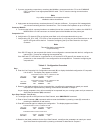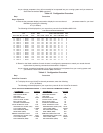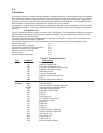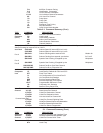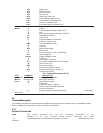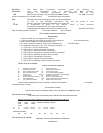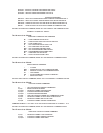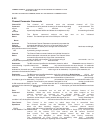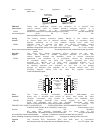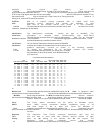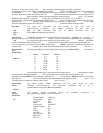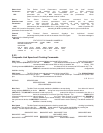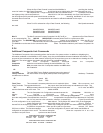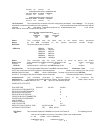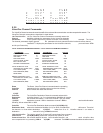COMMAND EXAMPLE : ATV2LIFXSL- SETS THE LOCAL INTERFACE OF CHANNEL 2 TO FXS
WITH LOOP START.
FOR HELP ON A SPECIFIC COMMAND, ENTER ATH FOLLOWED BY A COMMAND LETTER.
5.2.2
Channel Parameter Commands
Channel Off The channel off command turns the selected channel off. This
Command command turns off a particular channel or all channels depending on the command. This
allows the more efficient use of the
B0 dynamically allocated buffers and allows the multiplexer to skip the scanning of unused
channels.
Baud Rate The Bxxxxx command selects the bps rate on the indicated
Select channel. The channel bps rate is from 300 bps to 19.2K bps
Bxxxx
Universal The Universal Channel Parameters command incorporates the
Channel commands that follow it (all prior to a Carriage Return) into all
Parameters the channels. This allows you to change such conditions as baud rate, word length,
parity and flow control on all channels
CO by executing a single command.
Channel The Channel Select command selects an individual channel on
Select which subsequent commands can operate. The Channel Select
command must precede any of the other commands but
C1-C32 remains in effect until changed. This is so that a string of commands can be
entered without preceding each one with a Cxx command.
Destination The DC command specifies the destination channel to which Channelthe source channel is
communicating. A specific channel can Number only communicate with one other channel. On multinode
networks, this command must be entered at both channel locations specifying DCxx each other as
destinations (channels can pass through six nodes to get to its destination). On point-to-point networks, this
parameter can be downline loaded.
Destination The DN command specifies destination node of the channels to Node Number which the
local source channels will connect. On multinode networks, this command must be entered at both channel
DNxx locations specifying each other as destinations (channels can pass through
six nodes to get to its destination). On point-to- point networks, this parameter can be down line loaded. For
example, if some node in your network is assigned 01 as its number (a node where
its SN command was SN01), you can communicate with the 01 location channels by executing a DN01
command for the channels you want to communicate with node 1. At that point, your local channels will communicate
with those at node 01.
Echo The E0-E1 commands turn on and off the echoplex feature of the
Command MultiMux. When the echo condition is on, the data entered on the
channel keyboard is returned to the channel display. The purpose
E0-1 of this is so that in interactive operations an operator will not
experience undue delays in seeing entered data appear on the monitor. When the echo
condition is off, the keyboard data is not returned to the monitor. E1 turns on echoplex and E0 turns it off.
Flow Control Flow Control is the means by which data flow is controlled from
Operations the channel devices into the MultiMux. Flow Control is necessary
when the data handling capacity of an individual channel cannot
F0-F2 keep up with the volume of data sent to it. There are two types of flow control available
on the MultiMux. The software based Xon/Xoff and hardware based Clear to Send (CTS). F0 turns flow
control off, F1 selects CTS flow control, and F2 selects Xon/Xoff
flow control. The way channel devices control the data flow to
them from the MultiMux is called Pacing (see Pacing command).
The combination of Flow Control for regulating data from individual
channel devices and pacing for regulating data to individual channel devices is how



